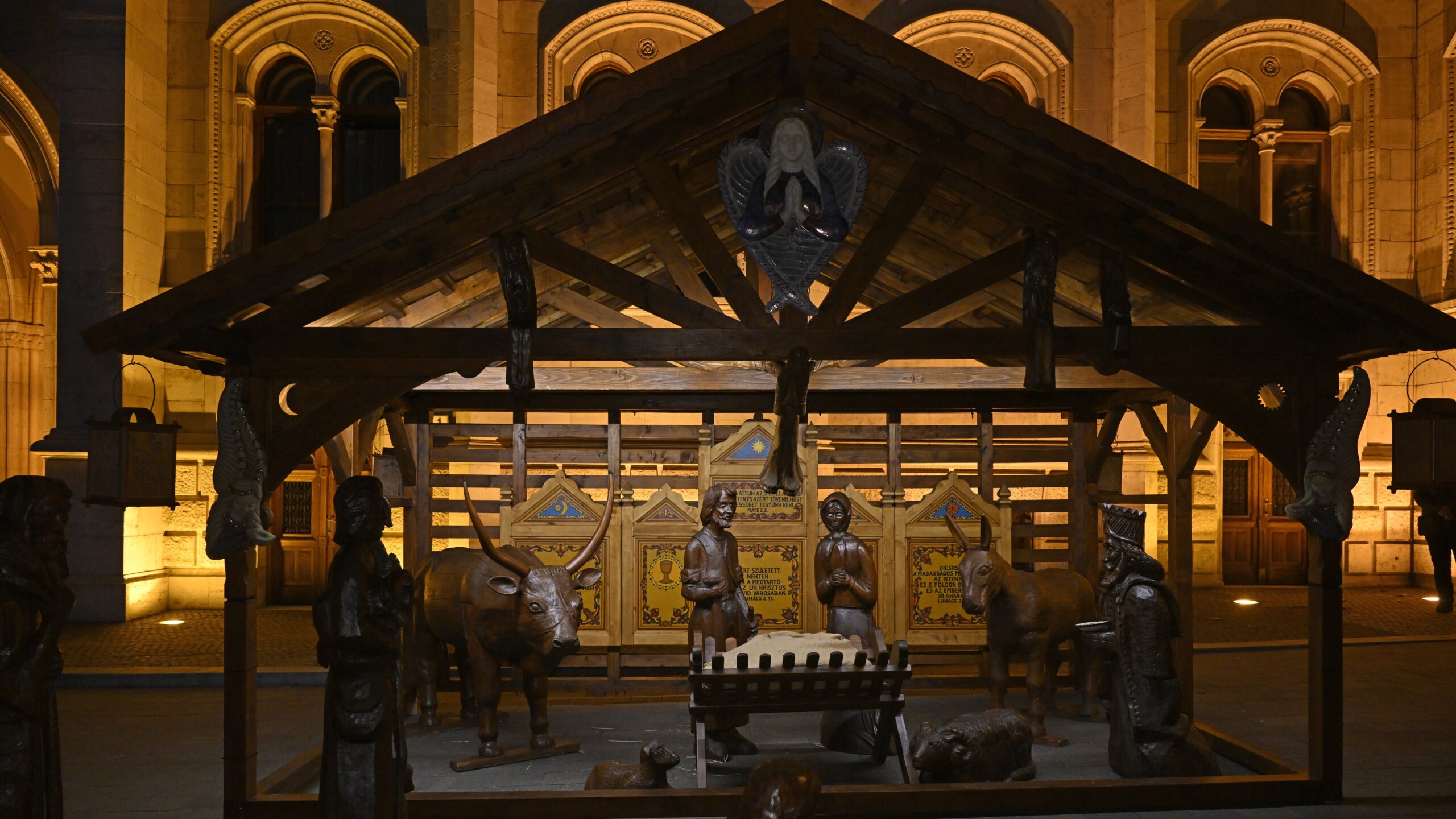The following has been adapted from an article written by Orsolya Ferenczi-Bónis, originally published in Hungarian in Magyar Krónika.
Christmas traditions were our ancestors’ way of ensuring the coming year’s success and their families’ health. Here is a list of some old Hungarian festive customs, which are still alive, refined and passed down through generations.
Nativity Plays
The nativity play is the most popular Christmas tradition in the Hungarian-speaking world. The dramatic play usually tells the story of Joseph and Mary’s search for lodgings and the birth of Jesus, but folklore has also included humorous scenes such as the other shepherds’ banter with the oldest, deaf shepherd. The tradition of nativity plays does not need to be revived, as it is a living tradition to this day, and they have been performed at kindergarten and school celebrations as well. By making our own nativity scene—even in the simplest way, by cutting out printable templates from paper—, we can put the characters under the Christmas tree and act out the story with our own family.
Carolling
Back in the day, Christmas carollers or reciters would go around the village in different age groups, singing their songs at the houses where they were allowed to do so, and they would be gifted nuts, apples, strudels, and pretzels for their performance. In many places, this Transylvanian folk custom served as a prelude to the Christmas dance, which lasted several days. This old custom is still practiced in the countryside. Even if those of us living in cities do not go around singing a carol outside every house, it can be a nice surprise for grandparents from grandchildren to sing old Hungarian carols together.

‘The Holy Family Seeking Shelter’
During the ritual of ‘the Holy Family seeking shelter’, in the days before Christmas, peasant families would bring an icon or statue to each other while singing and praying together. Each day a different family took its turn, and it usually involved nine families over nine days. Parish, kindergarten, and school communities still keep up this tradition, but we can also join together within the extended family and visit rarely seen uncles or great-grandmothers to find a place to stay for the Holy Family ourselves.
What to Set on the Christmas Table?
Our ancestors had different ideas about the Christmas menu than we do, but simple, delicious food can still be put back on the table, especially as our forefathers believed that eating them would ensure our health for the year ahead. These include bread, yeast bread, honey, apples, plums, walnuts, cabbage soup, garlic, fish, poppy seed bread, cottage cheese pie, pumpkin squash, wine, and of course, pálinka, the most famous traditional Hungarian fruit spirit. Each dish had a special power; legumes, pumpkin squash, and fish were eaten for plentiful money, nuts were used for health, and bread on the Christmas table was believed to provide a year’s supply of bread. The apples were cut into as many pieces as there were family members so that they could all eat them, thus strengthening the feeling of togetherness, since the folk belief is that whoever eats them will always find their way home—thus, this is a beautiful tradition worth reviving.

The Christmas Table
Our ancestors believed that the objects placed under the Christmas table had magical powers, so during the Christmas meal they placed there all sorts of things they wanted to imbue with magical properties, from tools and household utensils to hay and straw.
The Christmas tablecloth was believed to have fruit-bearing powers and was later used for sowing or as baking. Instead of giving objects magical powers, this tradition can be carried forward by discussing at the Christmas dinner table what the year has brought, what one’s personal favourites have been, whether it be books, films, exhibitions, and of course what one would like to read, watch, visit, learn about and experience in the coming year—hoping for the power of the spoken word to help make it happen.
Ban on Work
On 24 December the folk belief was that the housekeeper should not get up from the Christmas table, otherwise her hens would not sit on the eggs long enough. It is certainly worth reviving this custom because of how much better it is to spend a meal together, talking peacefully and listening to each other than to be constantly jumping around with the various dishes. Christmas Day, 25 December, was a traditional Hungarian family holiday, which meant a ban on work. Families tried to prepare everything on the previous days so that only the most necessary chores were left for this day. No explanation is needed as to why this tradition is good. Everyone needs at least one day a year when they know they really do not have to do anything!
Read more on Hungarian Christmas traditions:
Click here to read the original article.








